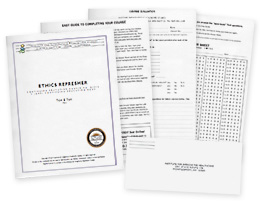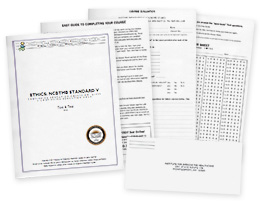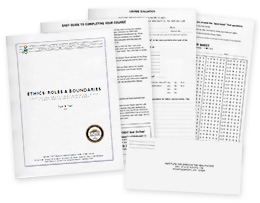

Every entry level massage program has a portion of curricula devoted to the professional role of a massage therapist. Being aware of the role we serve in a client’s life is key to understanding how we may support their health-related goals. Each client is unique in what they wish achieved for massage sessions and their perceived value of massage itself.
As a massage therapist communicates with a client, it is imperative that awareness is held to the nature of boundaries.
- Can a therapist foresee boundary violations impending?
- Are any professional “lines being blurred” regarding our role with a client?
- Is the massage therapist strictly perceived as a facilitator of health or are there other expectations along with bodywork?
This article explores the nature of professional roles and boundaries in the massage and bodywork industry.
I encourage therapists to discuss these matters with their peers; managers to discuss these issues with their downline team; and owners to critically examine how your business supports therapists through challenging ethical situations.
Physical and Nonphysical Boundaries in the Massage Industry
Boundaries are physical and nonphysical limits determined by individuals to ensure security, safety and well-being.
Examples of physical boundaries include:
- types of clothing worn
- garments kept on while laying upon the massage table
- and items held, such as bags and purses.
Nonphysical boundaries include:
- distance kept around one’s body
- time allocated towards activities of value
- and mental exercises one uses to protect against the energy of others.
Therapists must be conscious of boundaries when interacting with clients. Boundaries will not be equal among all clients. Some clients may not mind if you stand 2 feet away from them; however other clients will think you are smothering them physically by standing too closely. A therapist can make proper adjustments in both communication and quality of touch when boundaries are understood.
Awareness of Boundaries
Awareness is crucial in understanding boundaries created by clients. Any therapist can learn to develop intuition keen to sensing boundaries with clients. Reading non-verbal communication is one effective means to becoming aware of boundaries. Holding awareness to a client’s hand gestures, facial expressions, body movements, posture, and eye contact provide clues on the comfort level of a client.
Where Do Boundaries Come From?
For some clients, boundaries arise from sensitivity to what is perceived within the client’s aura fields. For others, past experiences shape boundaries.
Client’s perceptions of their environment create boundaries. Are there any decorum items, wall hangings, or room furnishings which make some clients feel uneasy? Does the massage table appear clean and inviting, or unkept and unappealing? Are there items in the wrong which create angst within a client?
Is the massage therapist aware of how their environment will be perceived? Do the therapist’s body language, appearance, and speech create boundaries by clients? It may be wise to ask for feedback from trusted colleagues, mentors and fellow peers. Are there areas of your personality, body language, speech patterns and presentation which need refining?
Right of Refusal
“Right of refusal” is an overlooked aspect of healthy boundary building. Clients have the right to refuse services for any reason at any time. If they determine that the session should be stopped right in the middle, their needs must be respected. Try to not take their decision to end the session early too personally. Rather, take it as a learning opportunity to recognize any aspect of your business and/or personal presentation to examine.
Keep in mind – you do not have to change anything about yourself or business just because one person did not appreciate it. Notice patterns of client responses or if multiple people comment on the same item.
Be aware that a session interrupted before completion may cause an issue the financial agreement. Does the client owe for the entire session time? If boundaries and roles are clearly established, this question is easy to answer. Having financial agreements in writing in a client policy form may be wise with these matters.
This same right also applies for the practitioner. A therapist can end a session at any time with just and reasonable cause. The term “just and reasonable” is quite subjective. This is where a therapist’s boundaries can be protected.
Protecting the Therapist’s Boundaries
For example, if a client insists you perform bodywork efforts with deeper pressure than you can safely accommodate, you can end the session before injuring yourself. There is never a need to injure yourself to satisfy a client. A simple reply such as “I cannot accommodate your deep tissue demands but can refer someone who may satisfy this request” will suffice as an appropriate response.
Consider the nature of the therapist-client relationship with these decisions. How healthy is your relationship with the client? Is the client taking advantage of you in any way? Is this situation correctable? These answers can determine if you are fulfilling a healthy role with this client and if boundaries need to be reexamined.
8 Professional Roles We May Fulfill for Clients
While we consider the therapeutic relationships forged with our clientele, we should also consider the professional roles we therapists may hold within their lives. A professional role represents the space from which I interact with a client. This can appear differently depending on the level of rapport developed.
Here are 8 examples of professional roles we as therapists may fulfill for clients:
- A provider of health care
- A provider of a healing service
- One who banishes pain
- A substitute for a physician
- A trusted resource of knowledge
- One who improves their activity or athletic performance
- A confidant
- A complimentary practitioner
It is healthy to determine which role you fulfill for each client. Also consider how comfortable you are fulfilling any of these roles with a client. Can you foresee any potential challenges or ways the therapeutic relationship may deviate if roles change?
Conclusion
I encourage you to review the list of professional roles and perform role-playing exercises to practice handling situations that arise when roles are challenged.
For example, if you become a confidant to a client – how comfortable will you be hearing intimate details of someone’s life? A client may share details of divorce, abuse or intimate moments. Are you willing and/or able to hear such details? Be aware at which point you would state “I am not comfortable discussing issues beyond what I provide in massage sessions.”
Identifying the professional role from which a therapist interacts with a client as well as boundaries created both by therapist and clientele will help one foster proper communication with clients as a therapist navigates the often opaque waters of operating a massage practice.














